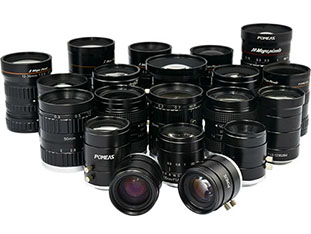What is an FA lens?
FA lenses are industrial lenses designed for factory automation. These lenses typically have a large aperture and relatively low light source brightness, making them suitable for use in situations where continuous photography and accuracy are not critical.FA lenses have high contrast and high resolution, and utilize an infinity optical system to provide excellent image quality across the entire field of view. They are commonly used in general industrial production process monitoring, such as the identification and tracking of goods in intelligent warehousing systems, as well as the precise gripping operations of robotic arms, which helps to improve production efficiency and accuracy.


How to choose a FA lens?
There are several key factors to consider when choosing a FA lens:
Application requirements:
(1) Firstly, define the scene in which the lens is to be used, including the size, shape and color of the object to be photographed, as well as the required accuracy requirements.
(2) Consider whether you need to take continuous pictures, whether you need to adjust the focal length, and other factors.
Aperture and Luminous Flux:
(1) FA lenses usually have a large aperture, which helps in taking pictures in low light conditions.
(2) Select the appropriate aperture size for the light source conditions to ensure adequate light flux and image brightness.
Focal length and field of view:
(1) The focal length determines the field of view and imaging size of the lens.
(2) Select the appropriate focal length according to the distance of the subject and the required field of view.
(3) The smaller the focal length, the greater the depth of field, but the more serious vignetting may be; the larger the focal length, the smaller the depth of field, but the image quality may be higher.
Resolution and Aberration:
(1) Make sure the resolution of the selected lens meets the application requirements.
(2) Consider the distortion of the lens, especially when shooting flat or straight objects, distortion may affect the accuracy of the measurement results.
Interface type and compatibility:
(1) Confirm the compatibility of the lens' interface type with the camera or other equipment.
(2) Commonly used interfaces include C, CS, S-port, F-port, V-port, and M-port.
Cost and Maintenance:
(1) Consider the price, performance and maintenance costs of the lens.
(2) Some high-end lenses may have better performance, but also higher prices; while some cost-effective lenses may meet the basic needs while reducing the overall cost.
Brand and Reputation:
(1) Choose well-known brands and reputable suppliers to ensure the quality of lenses and after-sales service. For example, POMEAS, founded in 2010, is a vision technology as the core, integrating optics, control, algorithms and other technologies, focusing on measurement systems, vision systems, optical systems, with customized solutions to help customers improve the competitiveness of their equipment.
Product recommendation
TECHNICAL SOLUTION
MORE+You may also be interested in the following information
FREE CONSULTING SERVICE
Let’s help you to find the right solution for your project!


 ASK POMEAS
ASK POMEAS  PRICE INQUIRY
PRICE INQUIRY  REQUEST DEMO/TEST
REQUEST DEMO/TEST  FREE TRIAL UNIT
FREE TRIAL UNIT  ACCURATE SELECTION
ACCURATE SELECTION  ADDRESS
ADDRESS Tel:+ 86-0769-2266 0867
Tel:+ 86-0769-2266 0867 Fax:+ 86-0769-2266 0867
Fax:+ 86-0769-2266 0867 E-mail:marketing@pomeas.com
E-mail:marketing@pomeas.com
